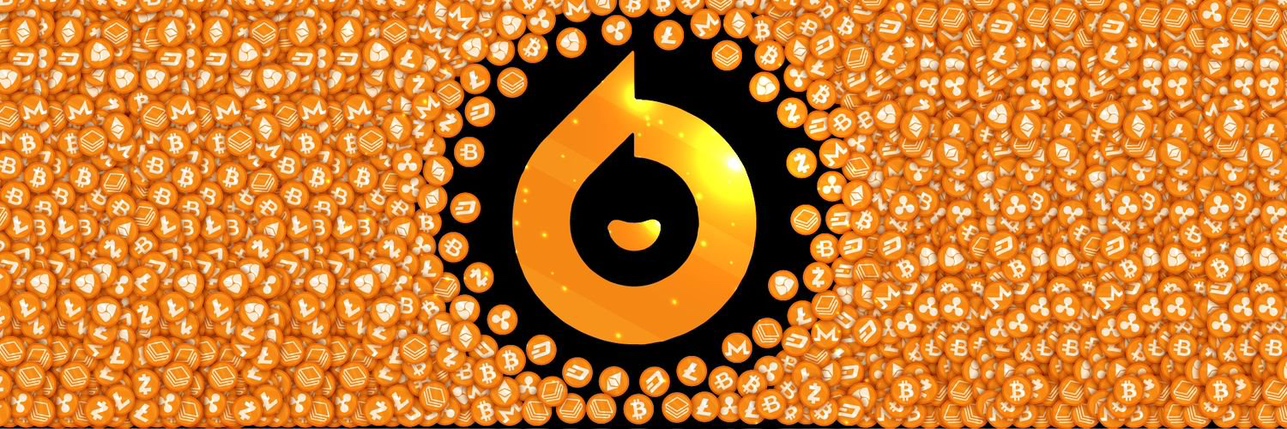
Preço de TrueUSDTUSD
Conversão de TUSD para BRL
Preço atual de TrueUSD em BRL
Você acha que o preço de TrueUSD vai subir ou cair hoje?
Informações de mercado sobre TrueUSD
Sobre TrueUSD (TUSD)
Sobre o TrueUSD
O TrueUSD (TUSD) é a primeira stablecoin indexada ao dólar americano totalmente regulamentada por uma instituição financeira estatal e verificada de forma transparente por empresas independentes. Ela foi lançada em março de 2018 com a visão de fornecer uma stablecoin transparente e segura. Com o boom do mercado de 13bbcfca-1694-4311-b441-b26446afbf9bs e a instabilidade inerente de várias moedas digitais, houve uma necessidade crescente de um ativo digital estável. O TrueUSD foi introduzido para preencher essa lacuna.
A TrustToken, a empresa que emite o TrueUSD, está registrada como Money Service Business na Financial Crimes Enforcement Network dos Estados Unidos. Seus fundos são regulamentados pelo Departamento de Negócios e Indústria do Nevada, Divisão de Instituições Financeiras. Além disso, a garantia do TrueUSD é auditada pela Cohen Company e pela Armanino, principais empresas de contabilidade do mundo.
Ao contrário de criptomoedas como Bitcoin e Ethereum, cujos valores podem flutuar drasticamente, o TrueUSD está atrelado ao valor do dólar americano. Para cada TrueUSD em circulação, há uma quantia equivalente de USD mantida em contas de garantia. Essa vinculação garante um valor estável e promove a confiança entre os usuários.
Por estar em total conformidade com os regulamentos dos EUA, o TrueUSD segue todas as diretrizes legais necessárias. Auditorias regulares realizadas por empresas terceirizadas garantem a integridade da moeda, tornando-a a escolha preferida dos usuários que priorizam a transparência e a segurança.
A estabilidade do TrueUSD atraiu vários usuários, incluindo comerciantes, empresas e instituições financeiras. Ele é amplamente usado como par de trading em corretoras de criptomoedas e como método de pagamento em locais onde o sistema bancário tradicional pode ser lento ou caro.
Referências
Site oficial: https://tusd.io/
Como funciona o TrueUSD
O TrueUSD emprega um método conhecido como tokenização para representar a moeda do mundo real na blockchain. Quando um usuário compra TrueUSD com dólares americanos, o valor equivalente em dólares americanos é mantido em um banco parceiro fiduciário profissional. Os tokens TrueUSD são então emitidos e enviados ao usuário.
O resgate de USD com TrueUSD é um processo simples. Os usuários podem enviar seus TrueUSD para o contrato inteligente, e o USD equivalente é desbloqueado da conta de custódia e enviado para a conta bancária do usuário. O TrueUSD correspondente é então queimado, garantindo uma relação 1:1.
A operação do TUSD é regida por contratos inteligentes na blockchain da Ethereum. Esses contratos automatizados lidam com a emissão e o resgate de tokens de forma segura. Todo o processo é transparente e pode ser auditado a qualquer momento, adicionando outra camada de confiança.
A TUSD desempenha várias funções no ecossistema financeiro. Sua estabilidade faz com que seja uma opção adequada para proteção contra a volatilidade de outros ativos. Além disso, ela desempenha um papel fundamental nas plataformas de finanças descentralizadas (DeFi), oferecendo um meio estável para vários serviços financeiros.
Apesar de seu sucesso, a TrueUSD não está isenta de desafios. A dependência da conformidade bancária e regulatória tradicional pode, às vezes, tornar os processos mais lentos. Os críticos também argumentam que a centralização no gerenciamento das contas de garantia contradiz a natureza descentralizada das criptomoedas.
Conclusão
O TrueUSD conquistou um nicho no mundo volátil das criptomoedas ao oferecer um ativo digital estável e transparente. Sua conformidade com os regulamentos, juntamente com a capacidade de manter uma paridade de 1:1 com o dólar americano, levou a uma adoção e confiança generalizadas. Os contratos inteligentes, a tokenização e os processos de resgate destacam um mecanismo robusto que aproveita os benefícios da blockchain e, ao mesmo tempo, mitiga seus riscos. À medida que o cenário das finanças digitais continua evoluindo, o papel das stablecoins, como o TrueUSD, pode se tornar ainda mais significativo, potencialmente moldando o futuro das economias tradicionais e digitais.
Histórico de preços de TrueUSD (BRL)
 Preço mais baixo
Preço mais baixo Preço mais alto
Preço mais alto 
Qual é o preço mais alto do token TrueUSD?
Qual é o preço mais baixo do token TrueUSD?
Previsão de preço do token TrueUSD
Qual é o melhor momento para comprar TUSD? Devo comprar ou vender TUSD agora?
Qual será o preço do token TUSD em 2026?
Em 2026, com base em uma previsão de taxa de crescimento anual de +5%, o preço de TrueUSD(TUSD) deve atingir R$5.66; com base no preço previsto para este ano, o retorno sobre investimento acumulado em TrueUSD até o final de 2026 atingirá +5%. Para mais detalhes, consulte Previsões de preços de TrueUSD para 2025, 2026, 2030-2050.Qual será o preço de um TUSD em 2030?
Promoções em destaque
Preços globais de TrueUSD
Como comprar TrueUSD(TUSD)

Crie sua conta na Bitget gratuitamente

Verifique sua conta

Converter TUSD em BRL
Perguntas frequentes
Quem emite e regulamenta o TrueUSD (TUSD)?
Posso converter TrueUSD (TUSD) para USD?
Como o TrueUSD (TUSD) mantém seu valor?
Há taxas associadas ao uso do TrueUSD?
O TrueUSD (TUSD) é seguro?
Qual é a diferença entre o TrueUSD (TUSD) e outras stablecoins, como USD Coin (USDC) ou Tether (USDT)?
Qual é o preço atual do TrueUSD (TUSD)?
Como o TrueUSD mantém sua estabilidade de preço?
TrueUSD é um bom investimento agora?
Onde posso comprar TrueUSD (TUSD)?
Quais fatores podem afetar o preço do TrueUSD?
O TrueUSD (TUSD) pode ser convertido de volta para USD?
Qual é o limite de oferta do TrueUSD?
O TrueUSD está disponível para staking ou para ganhar juros?
Como posso armazenar TrueUSD com segurança?
Quais são as taxas associadas à compra ou venda de TrueUSD na Bitget Exchange?
Qual é o preço atual de TrueUSD?
Qual é o volume de trading em 24 horas de TrueUSD?
Qual é o recorde histórico de TrueUSD?
Posso comprar TrueUSD na Bitget?
É possível obter lucros constantes ao investir em TrueUSD?
Onde posso comprar TrueUSD com a menor taxa?
Preços de criptomoedas relacionadas
Onde posso comprar TrueUSD (TUSD)?
Seção de vídeos: verificação e operações rápidas

Conversão de TUSD para BRL
Recursos de TUSD
Tags:
Bitget Insights





Operar
Earn
TUSD/USDT
SpotPreços de moedas recém-listadas na Bitget








